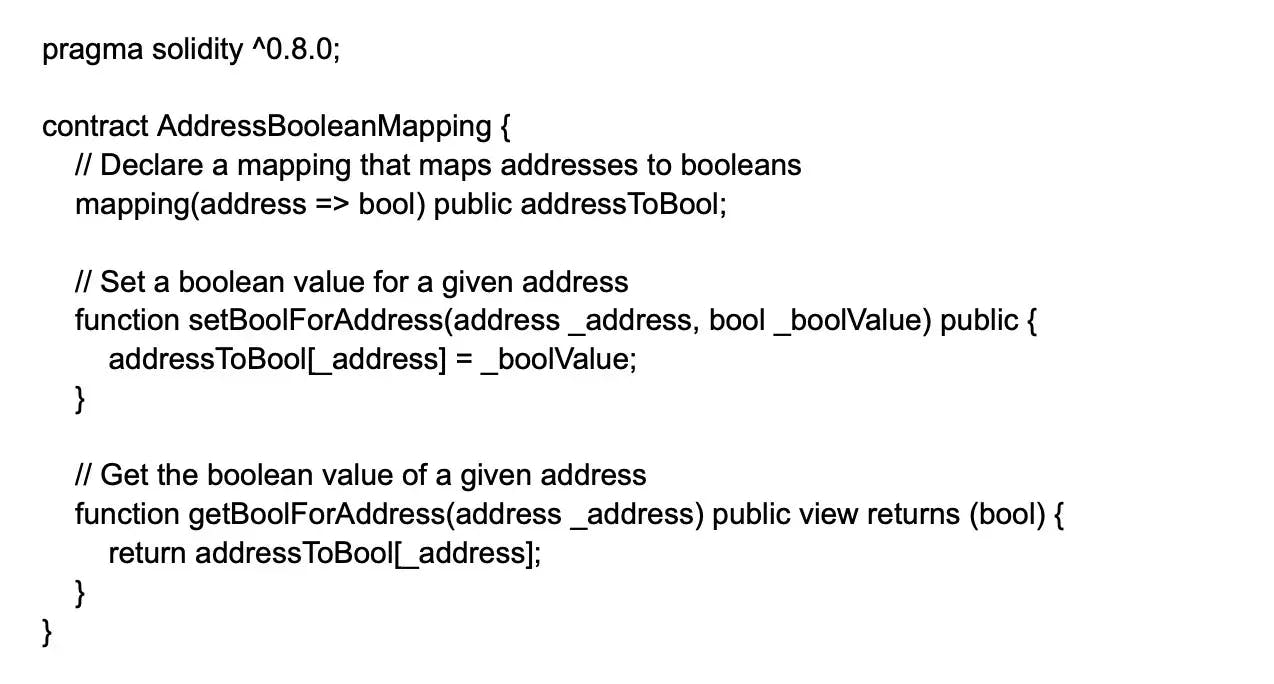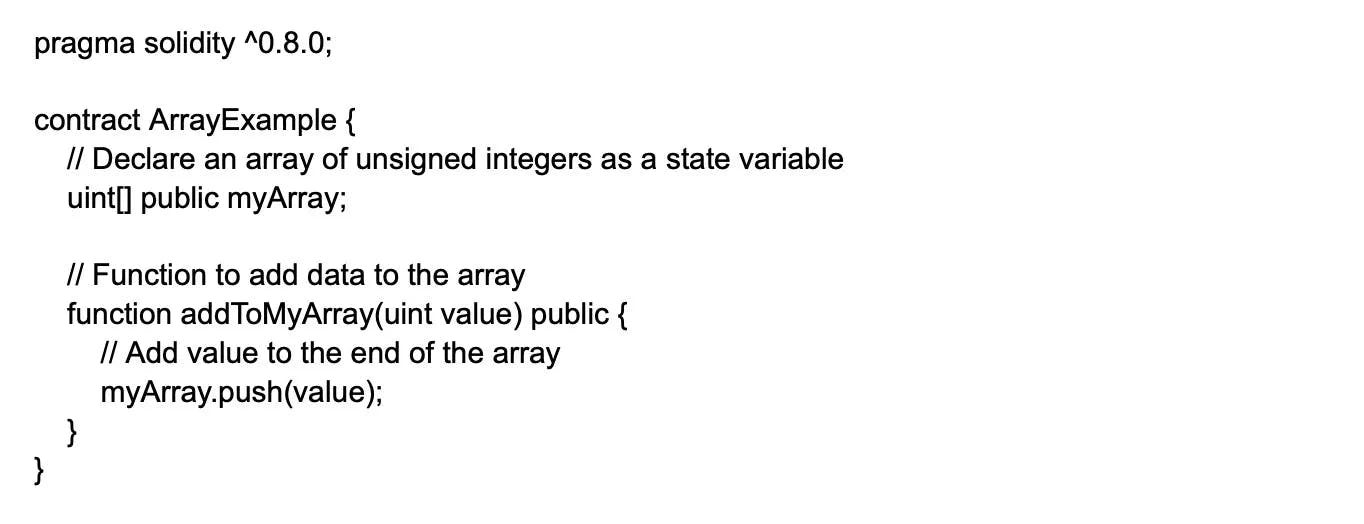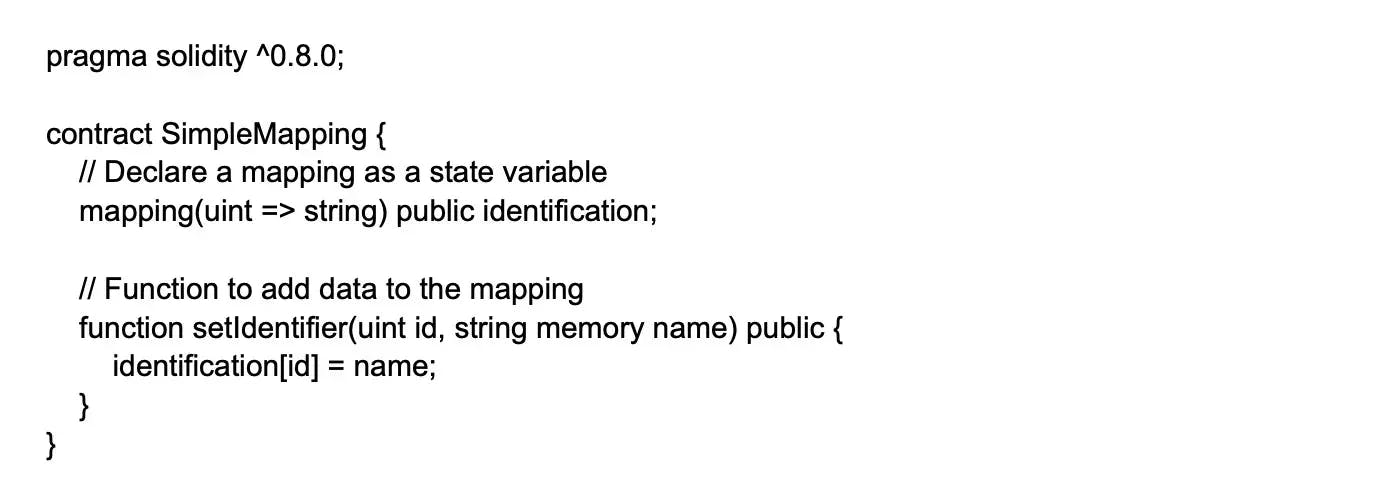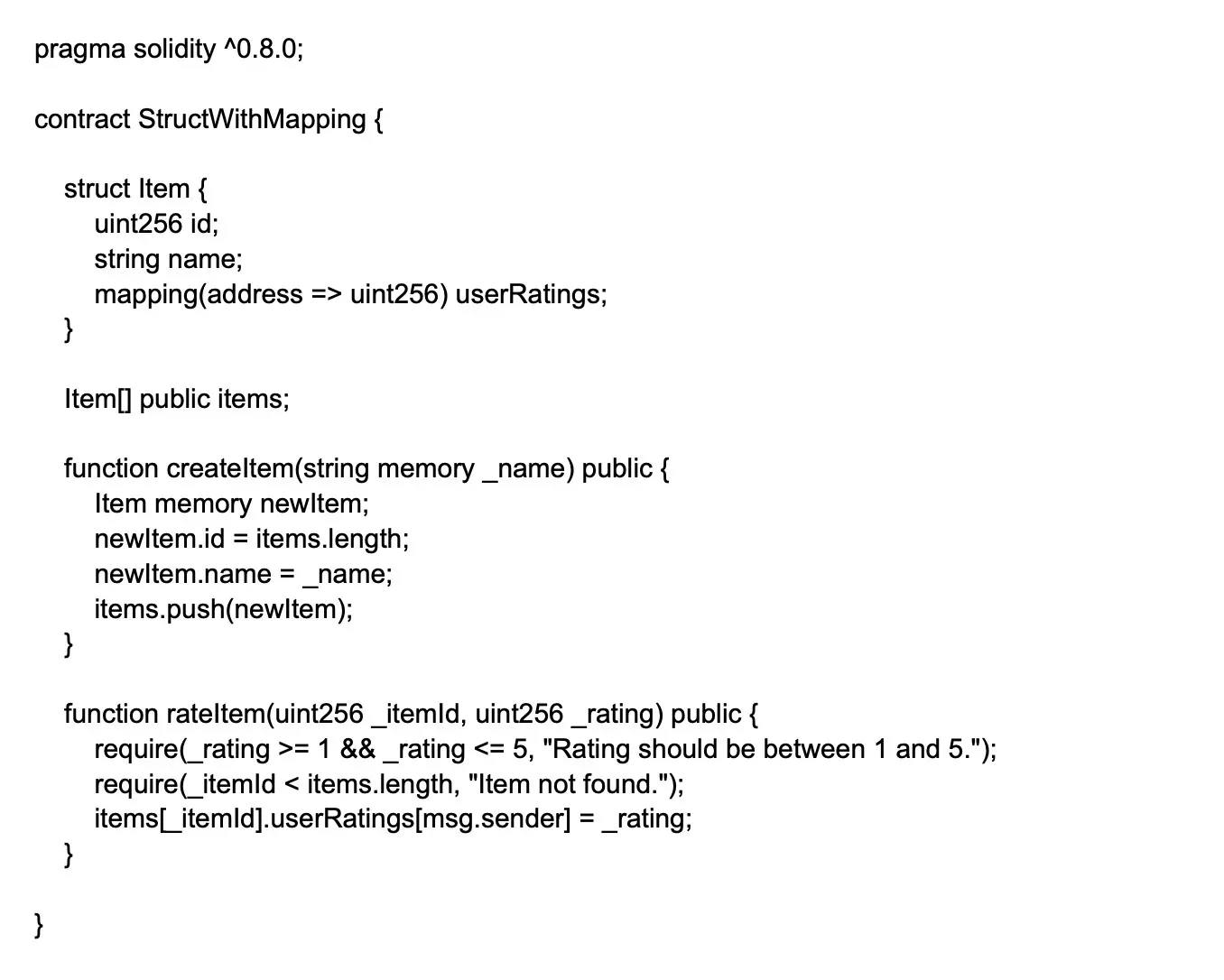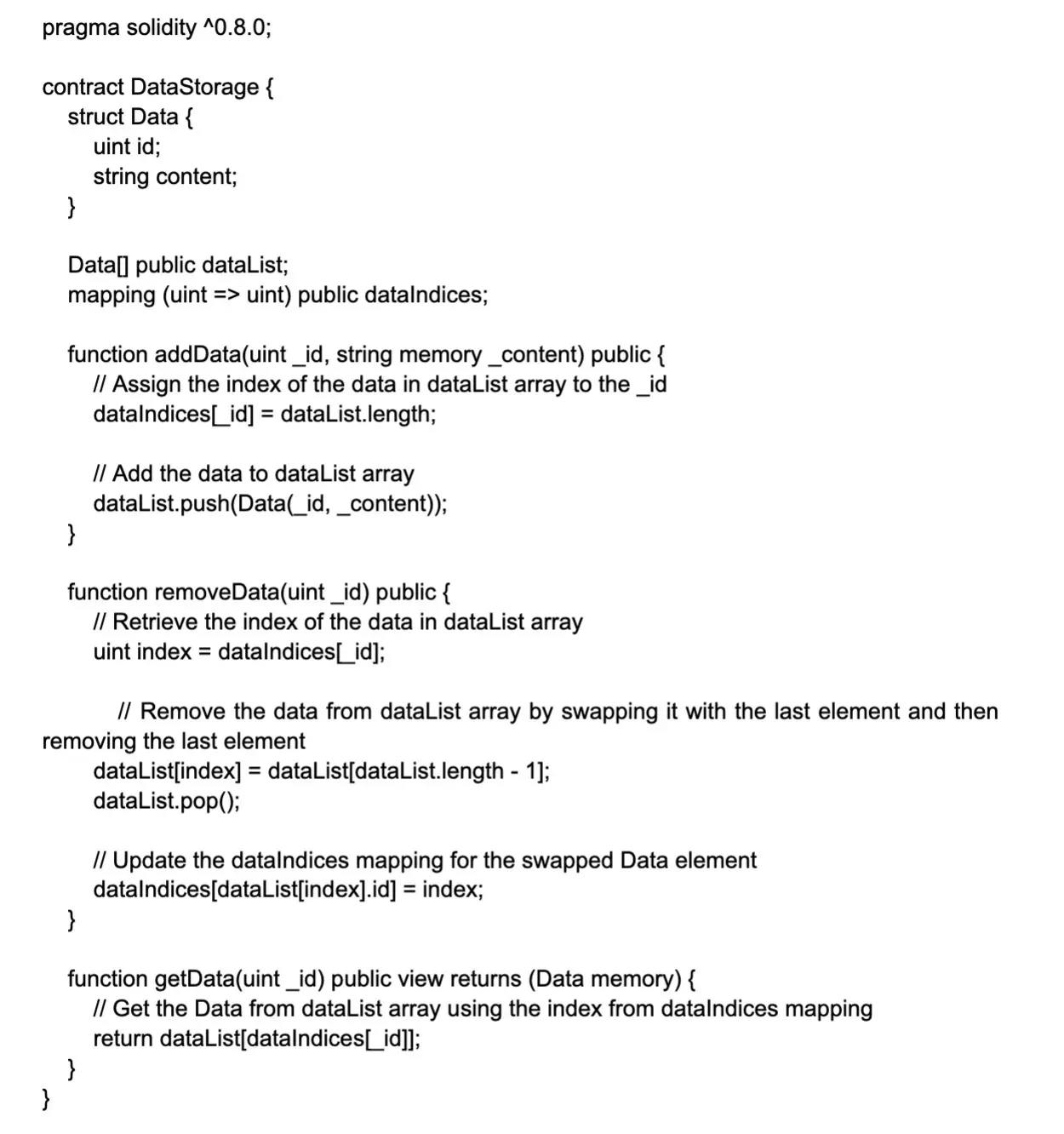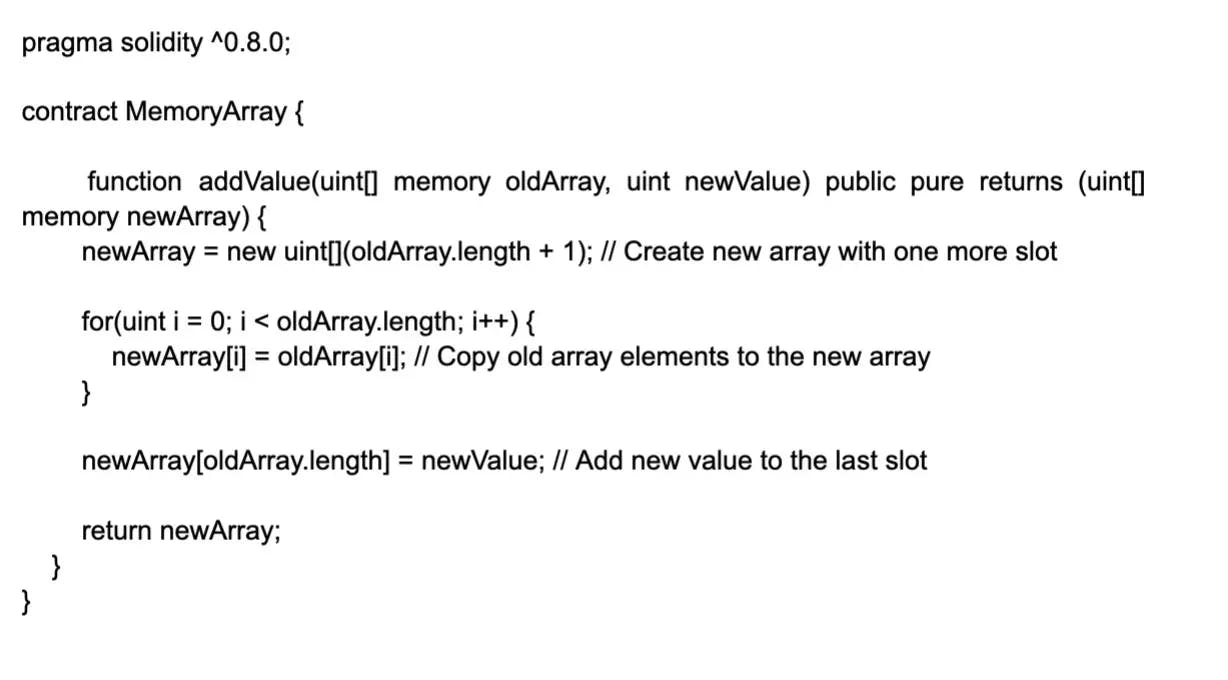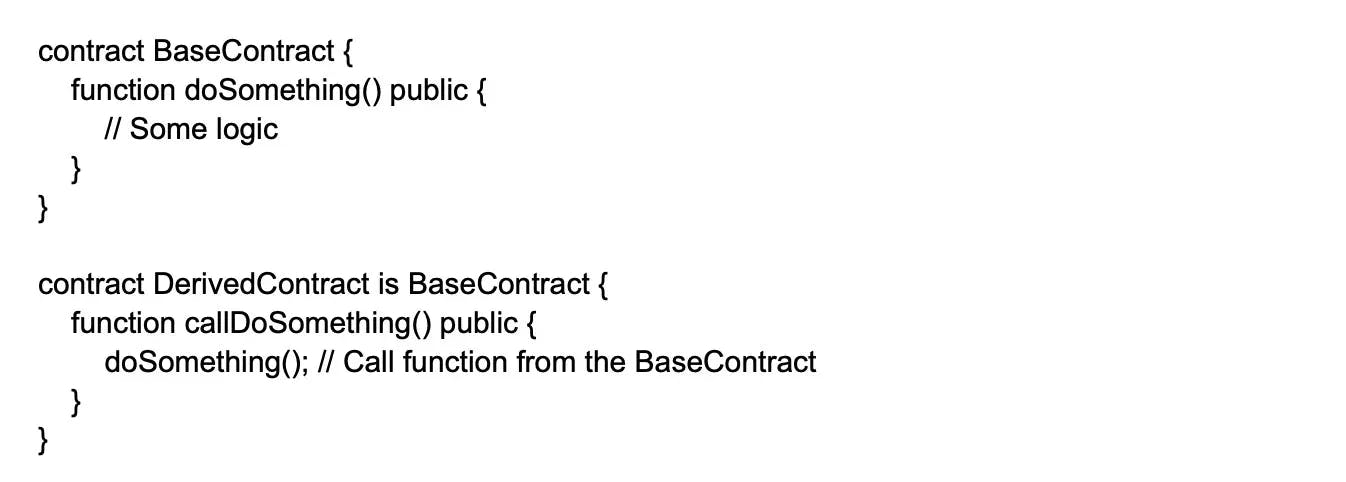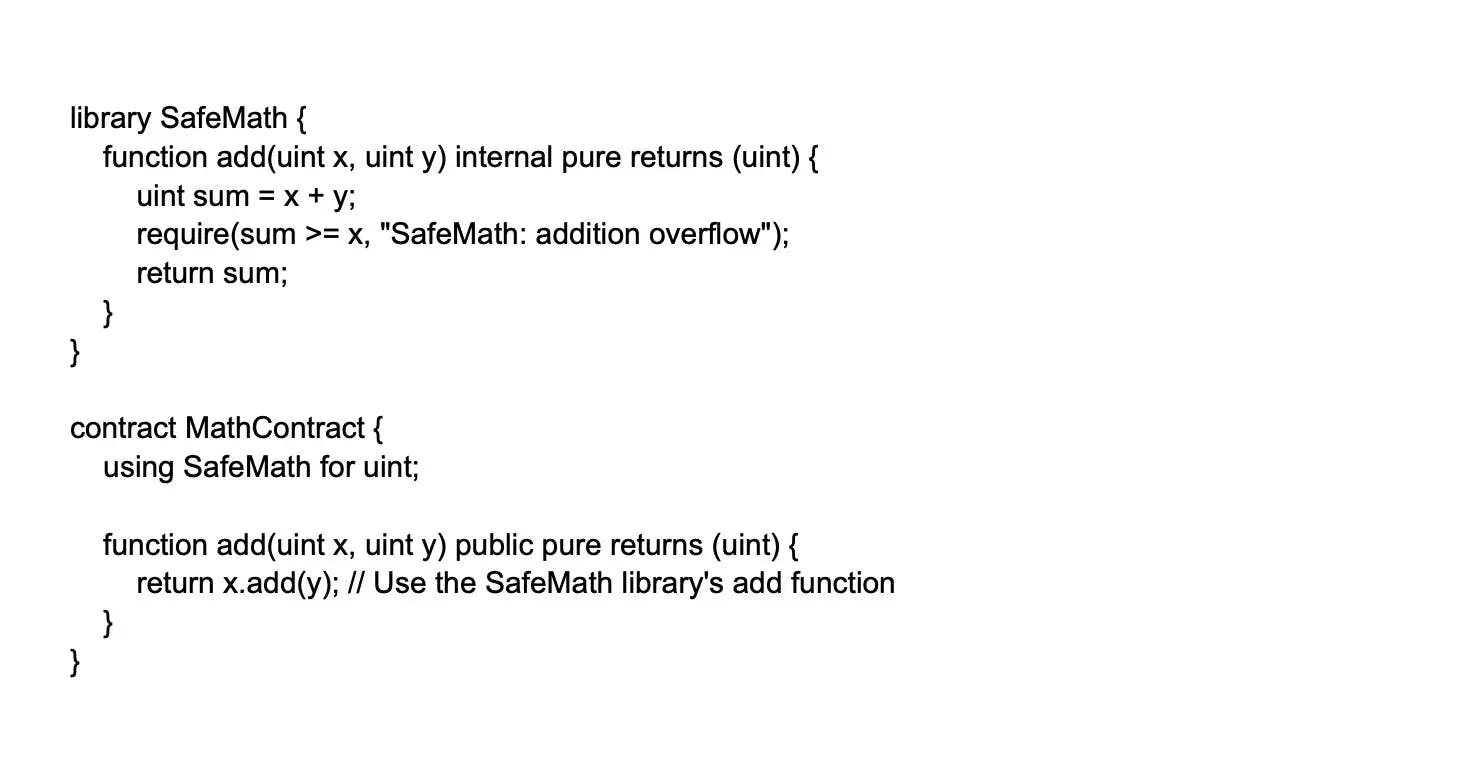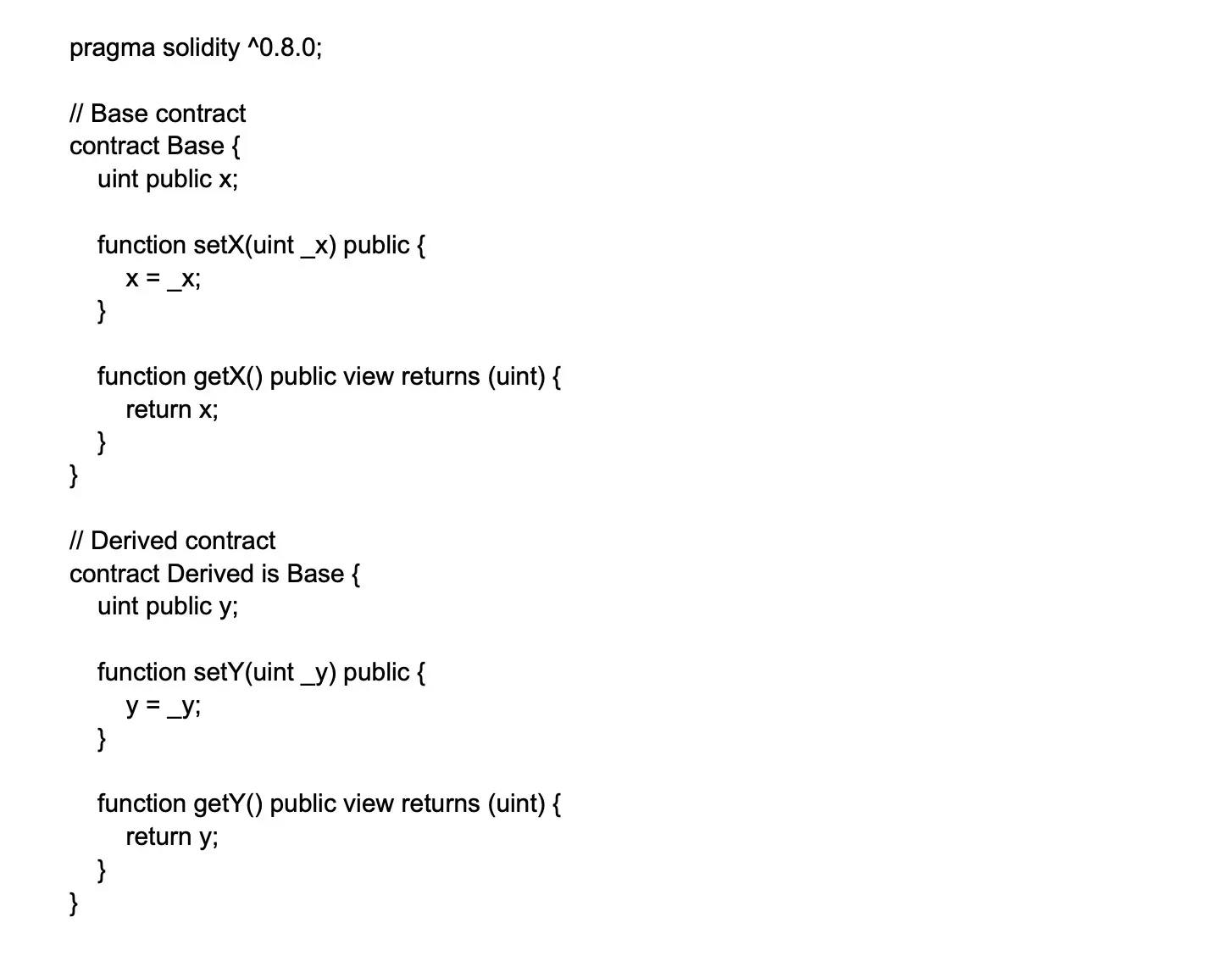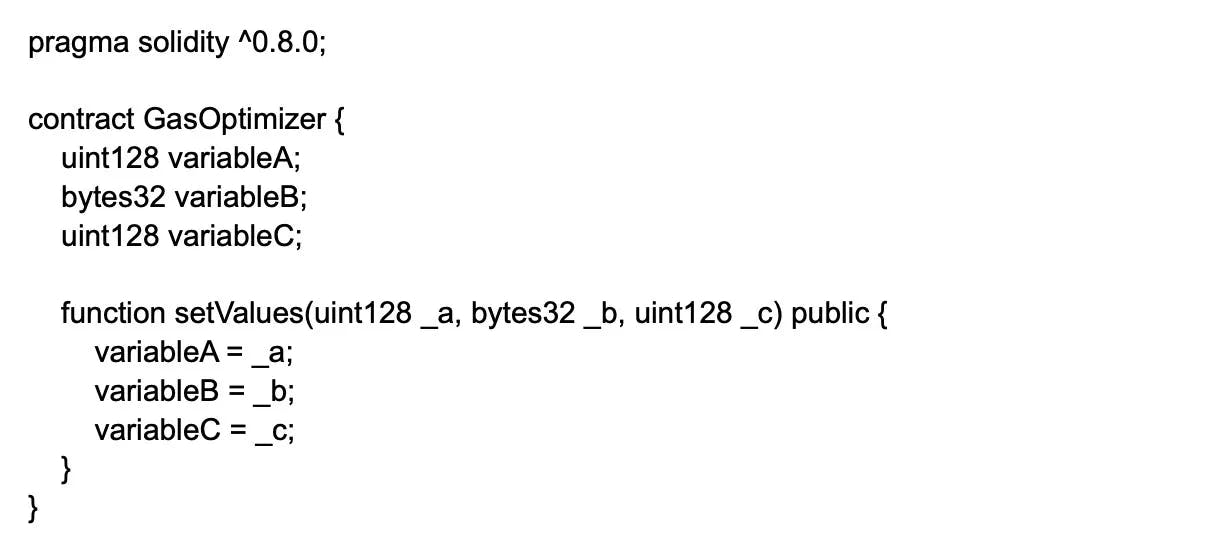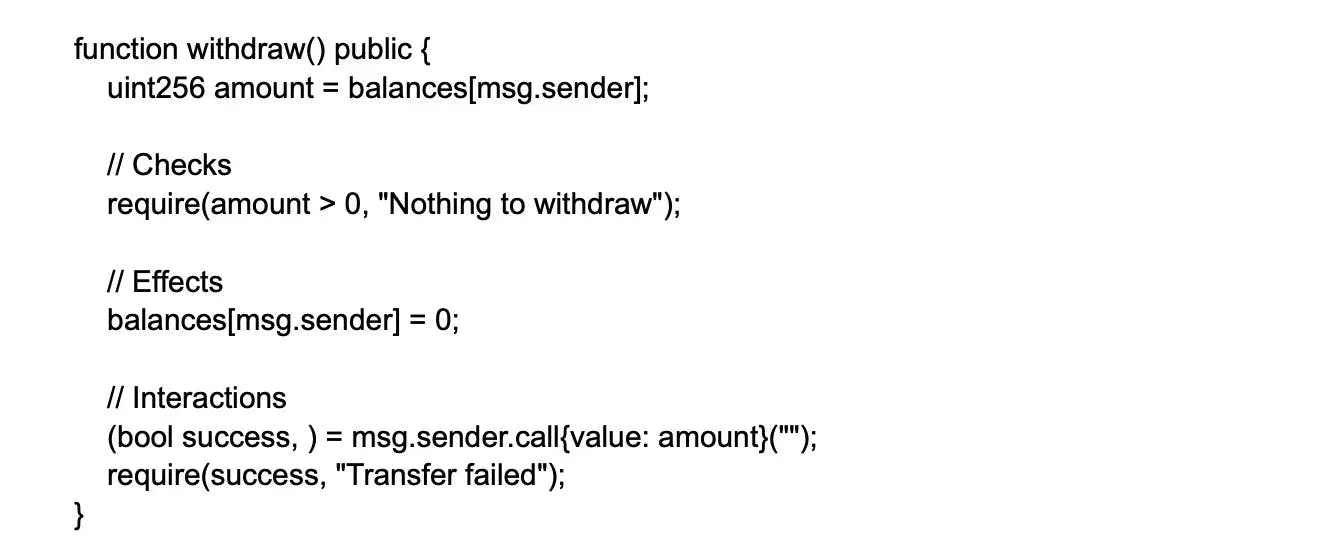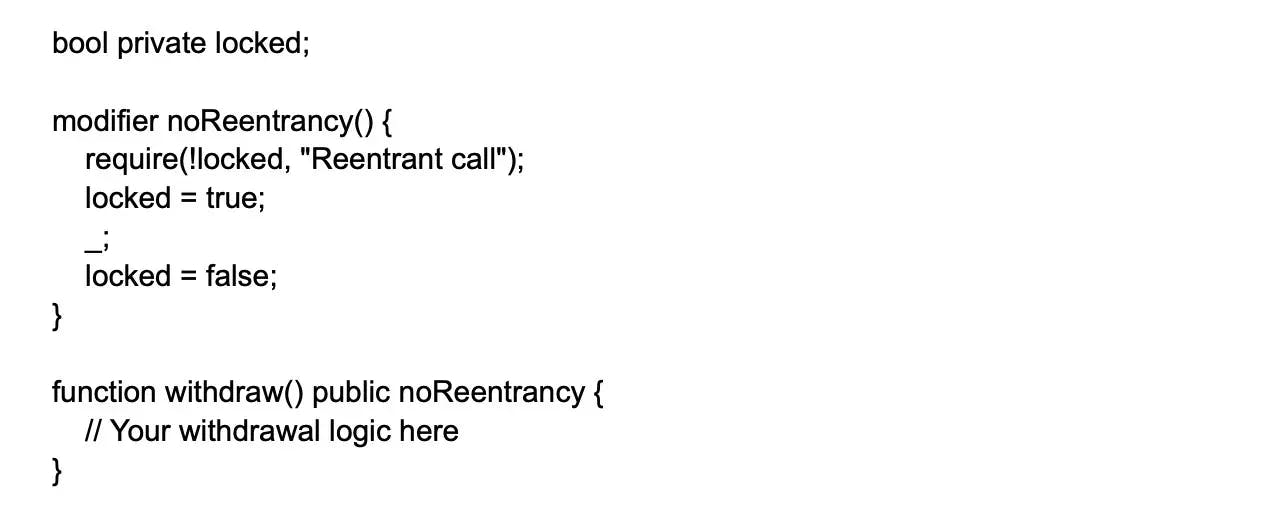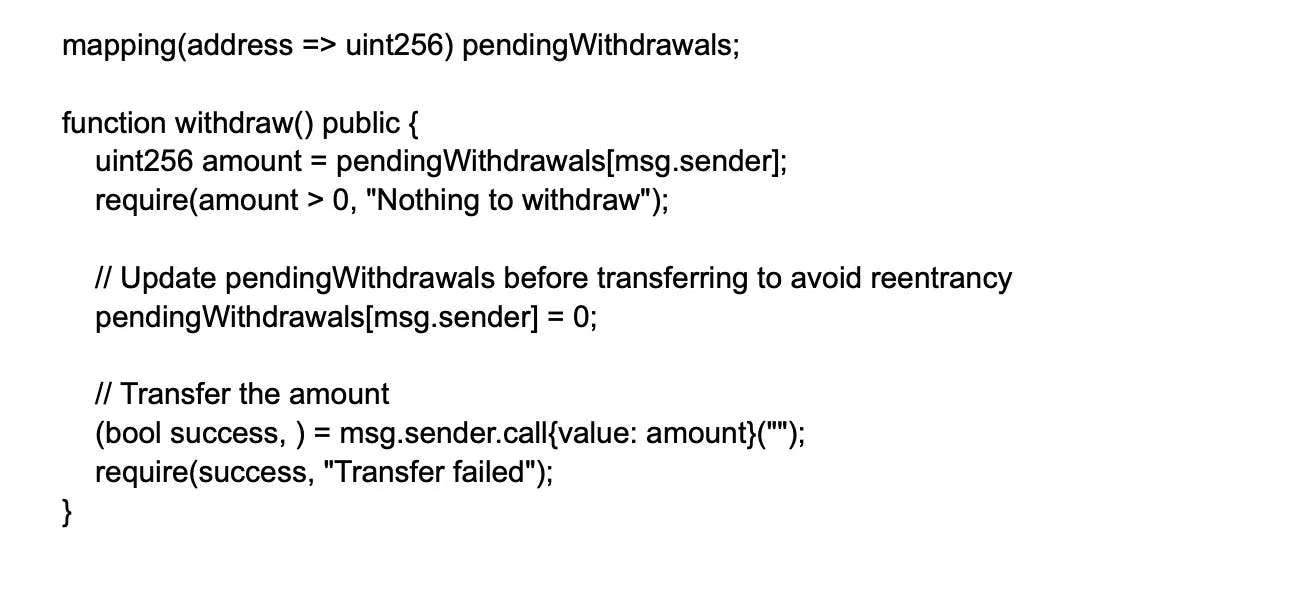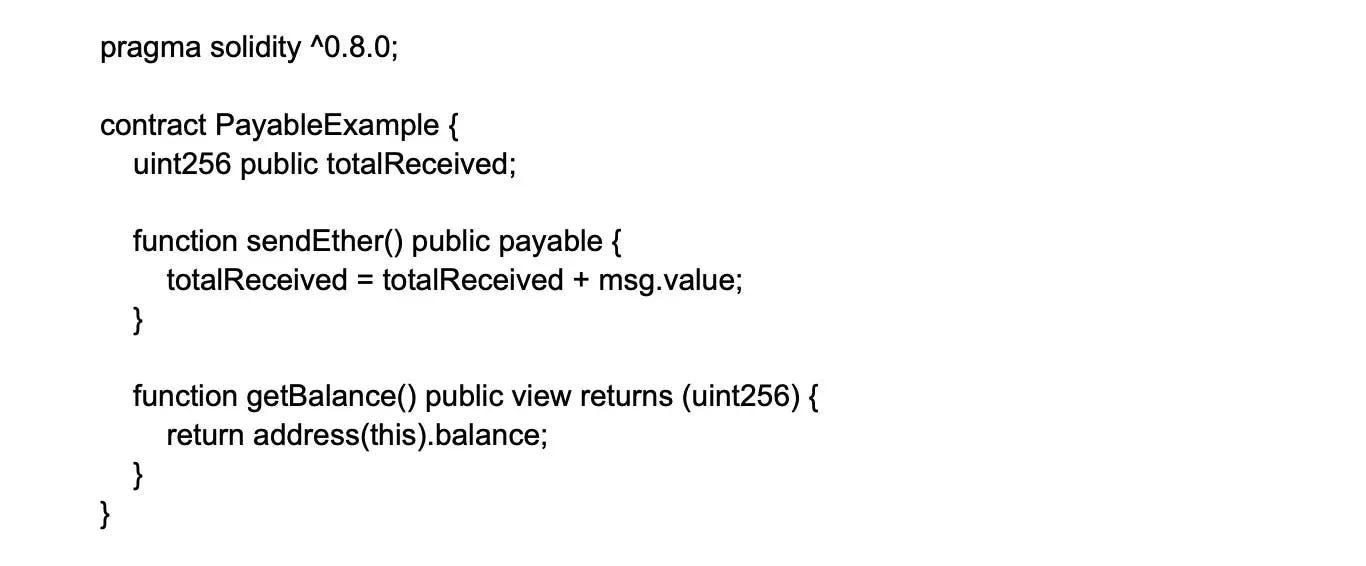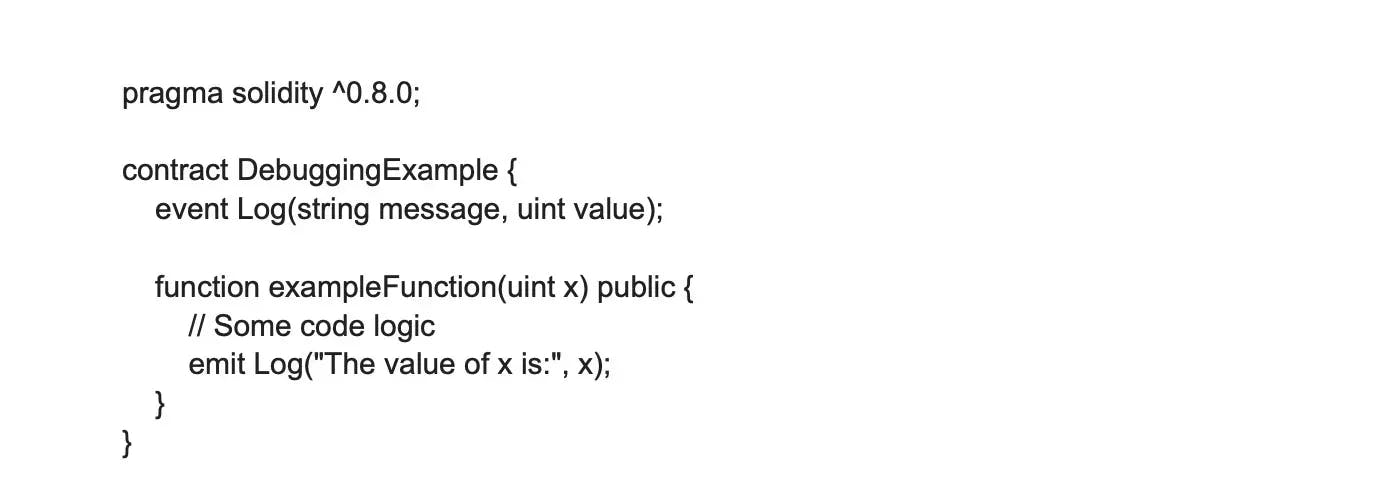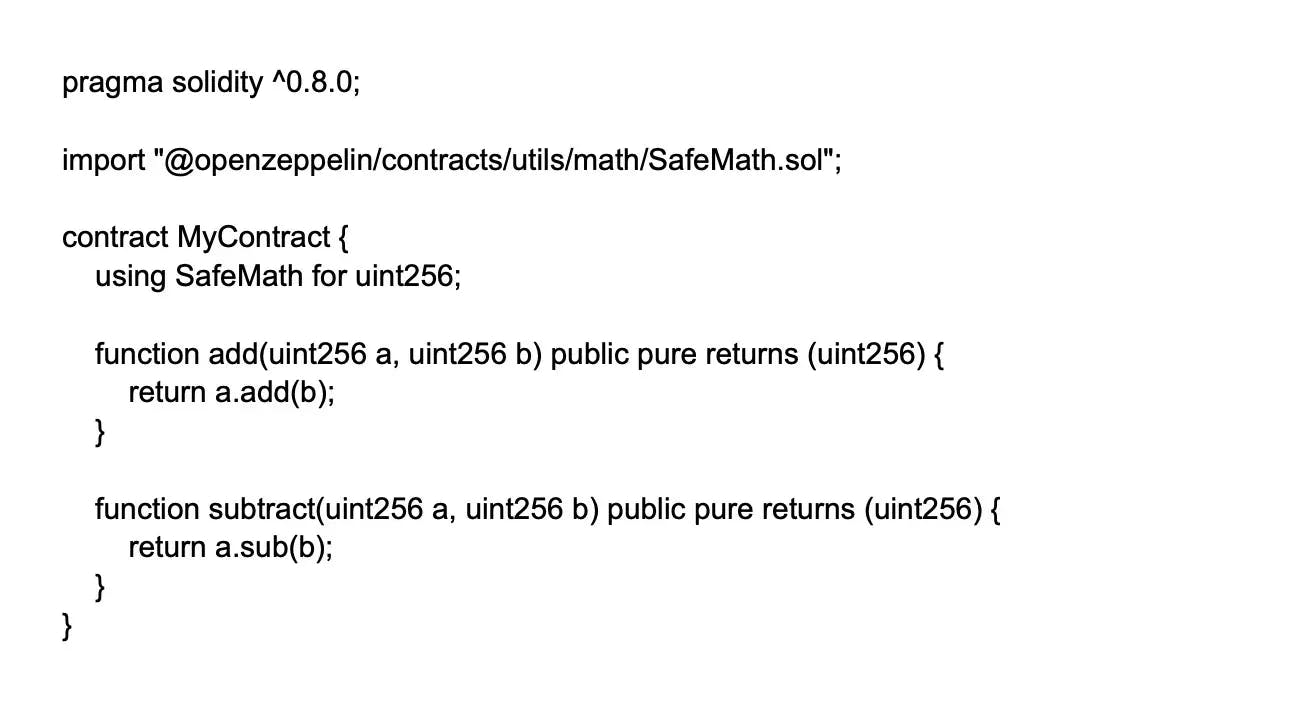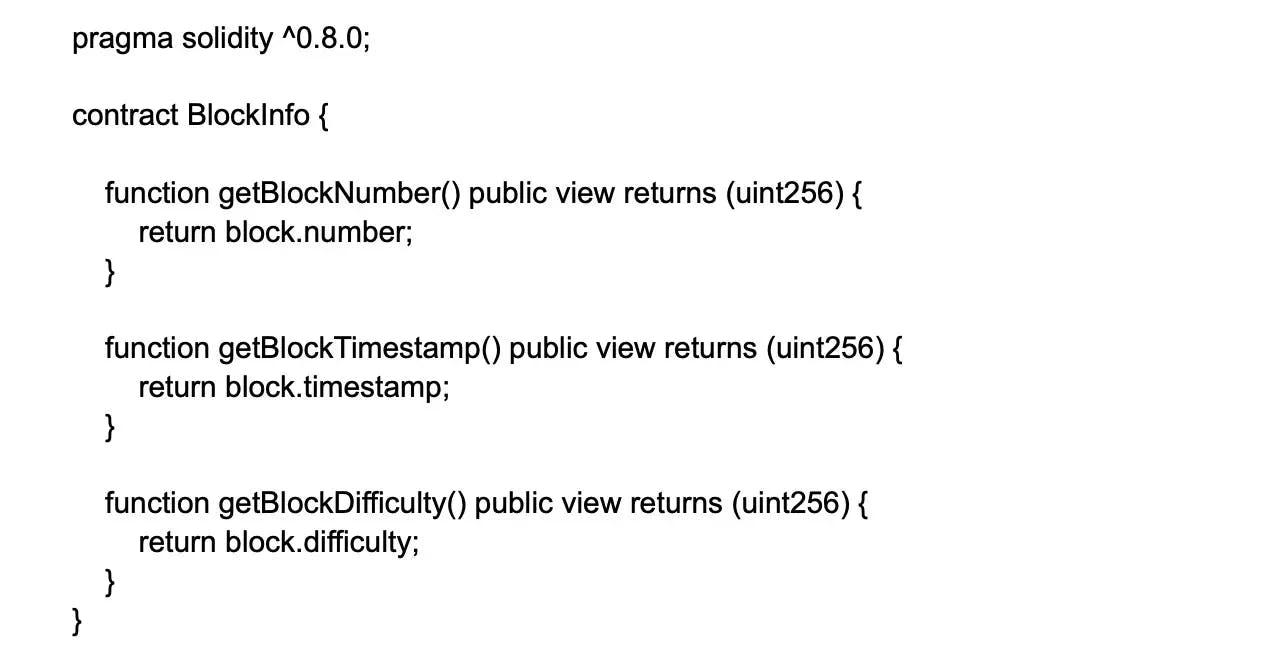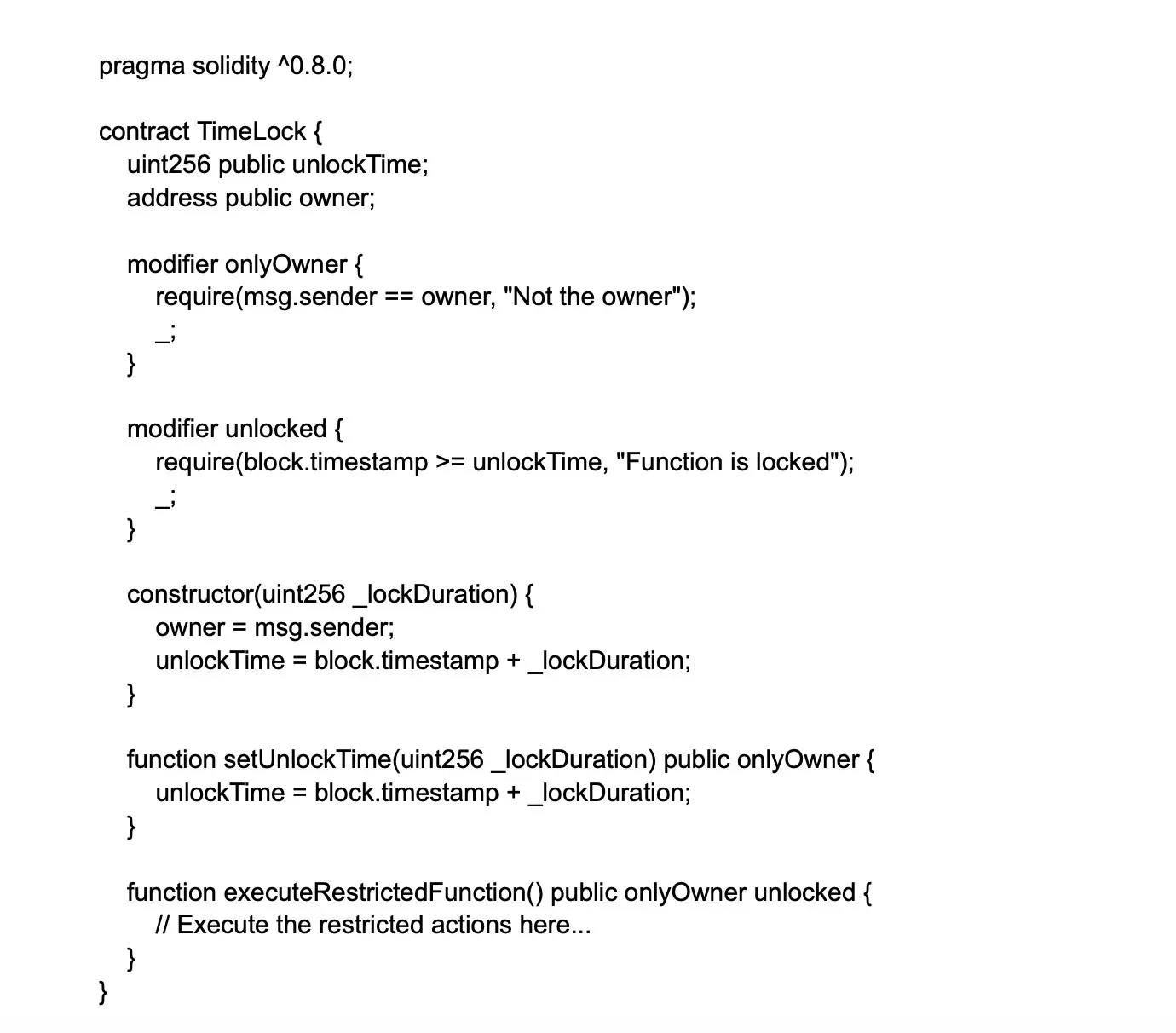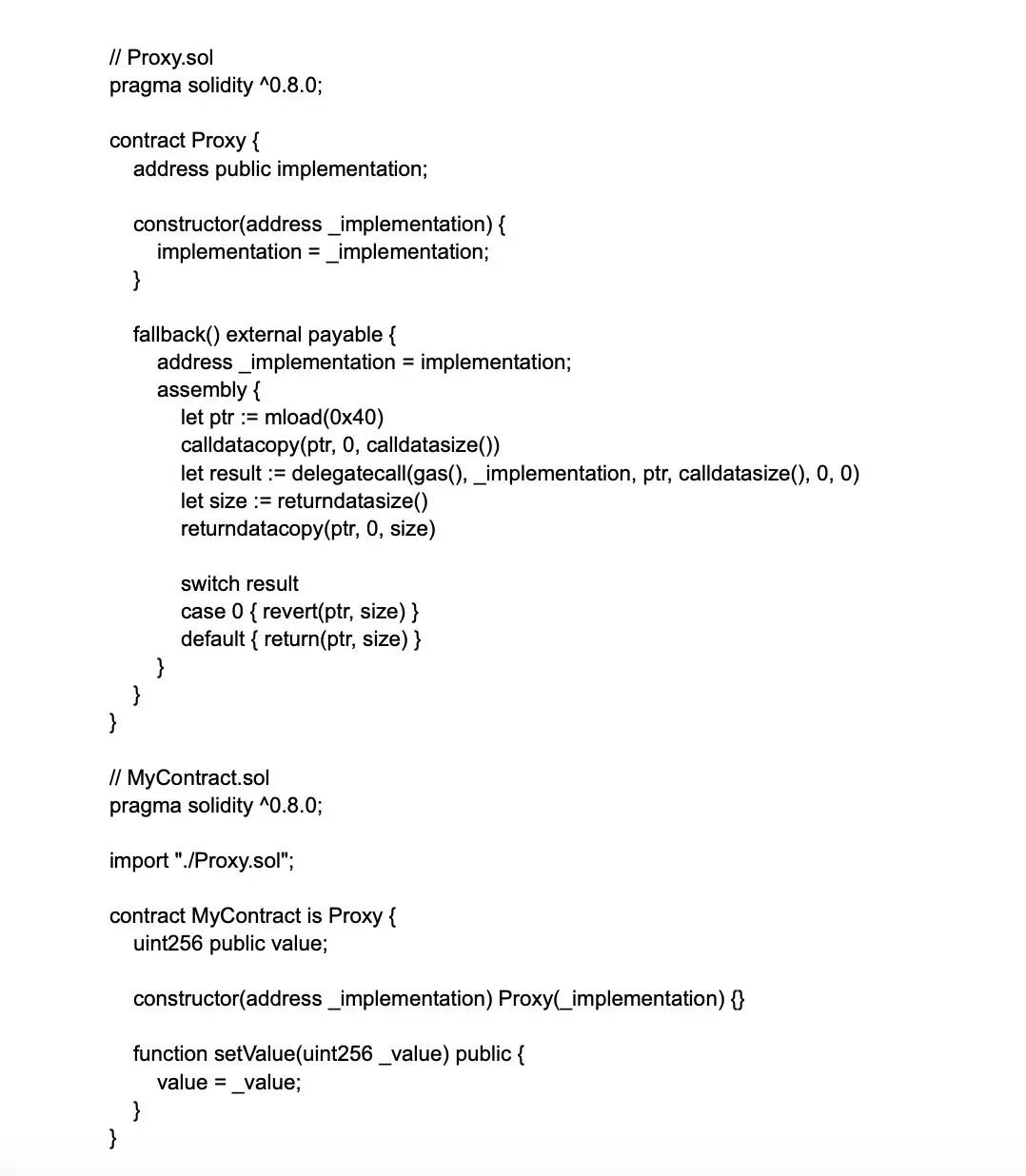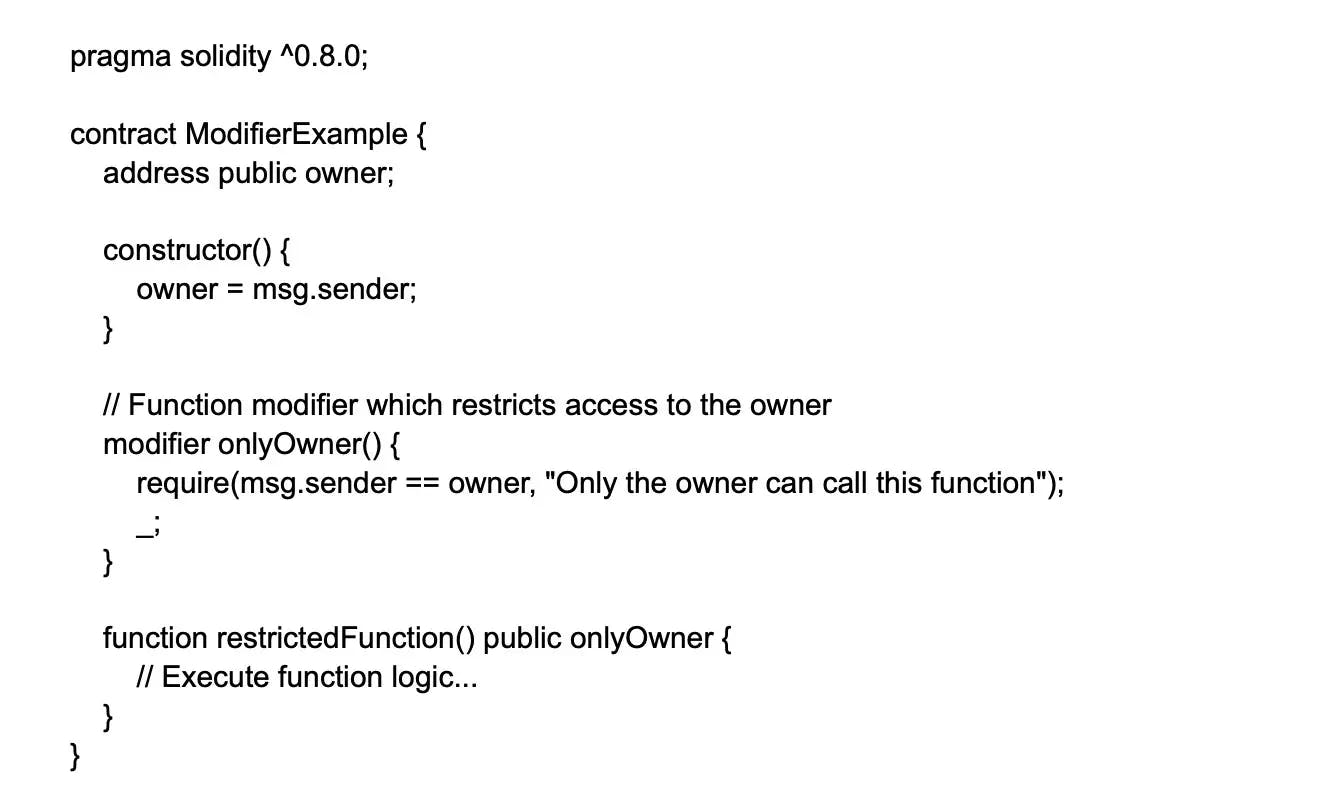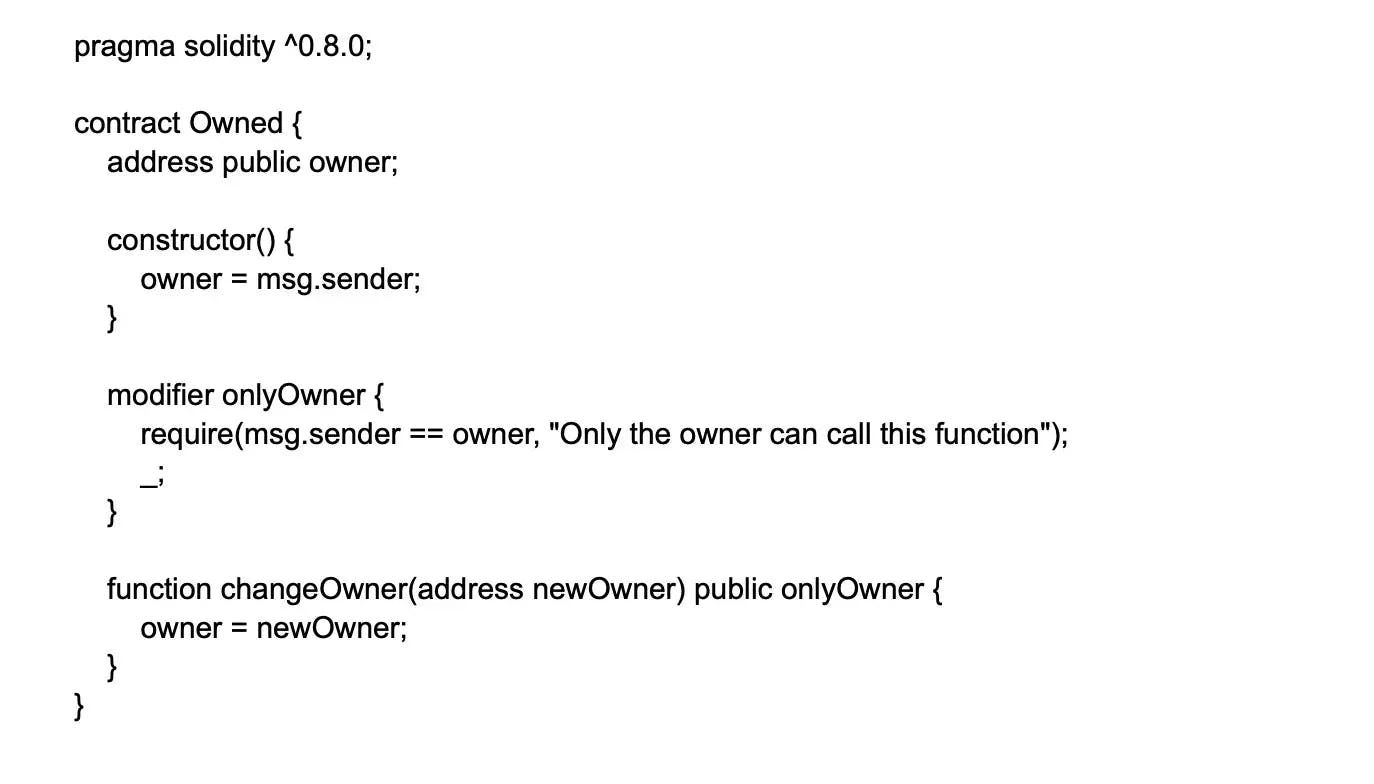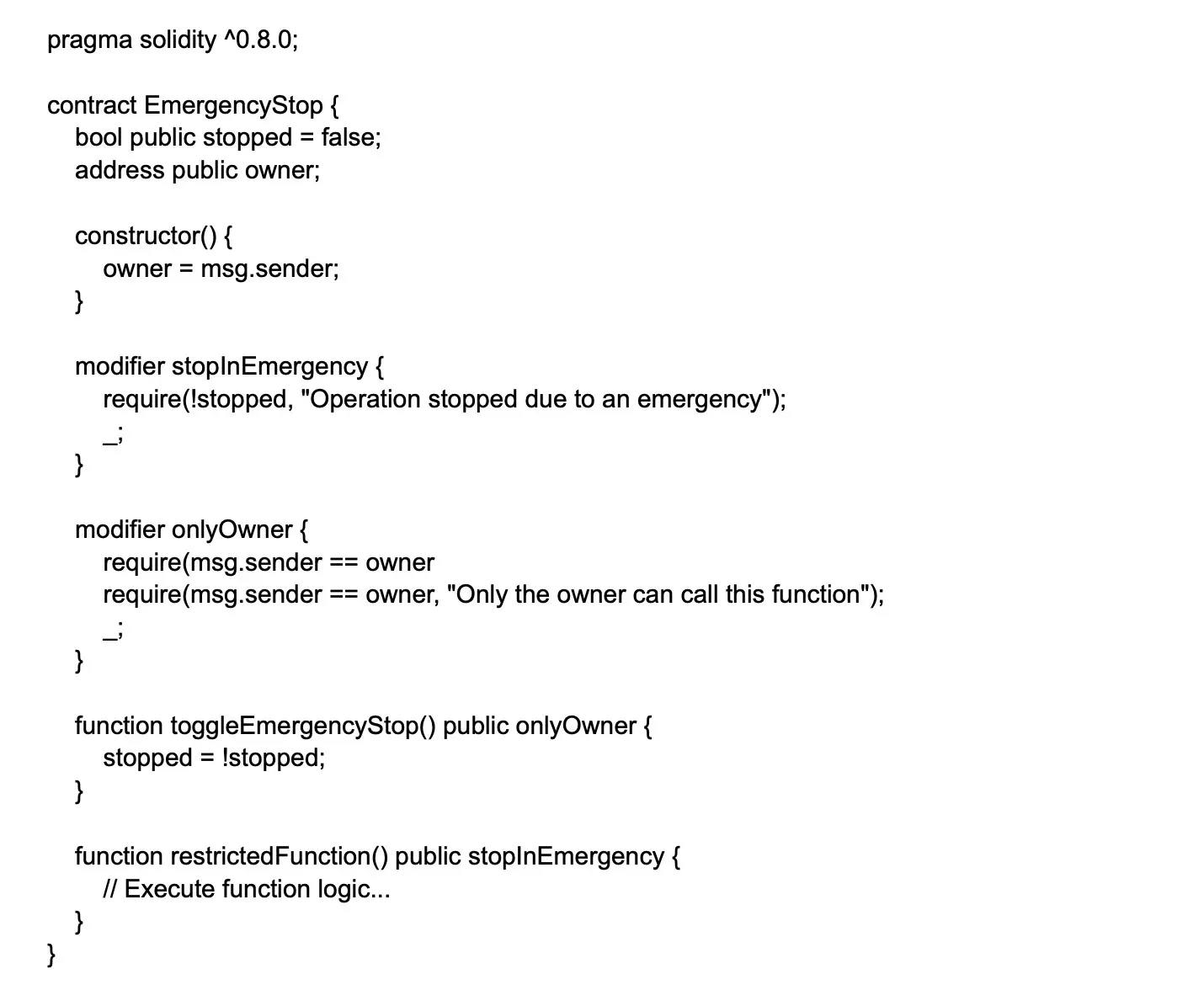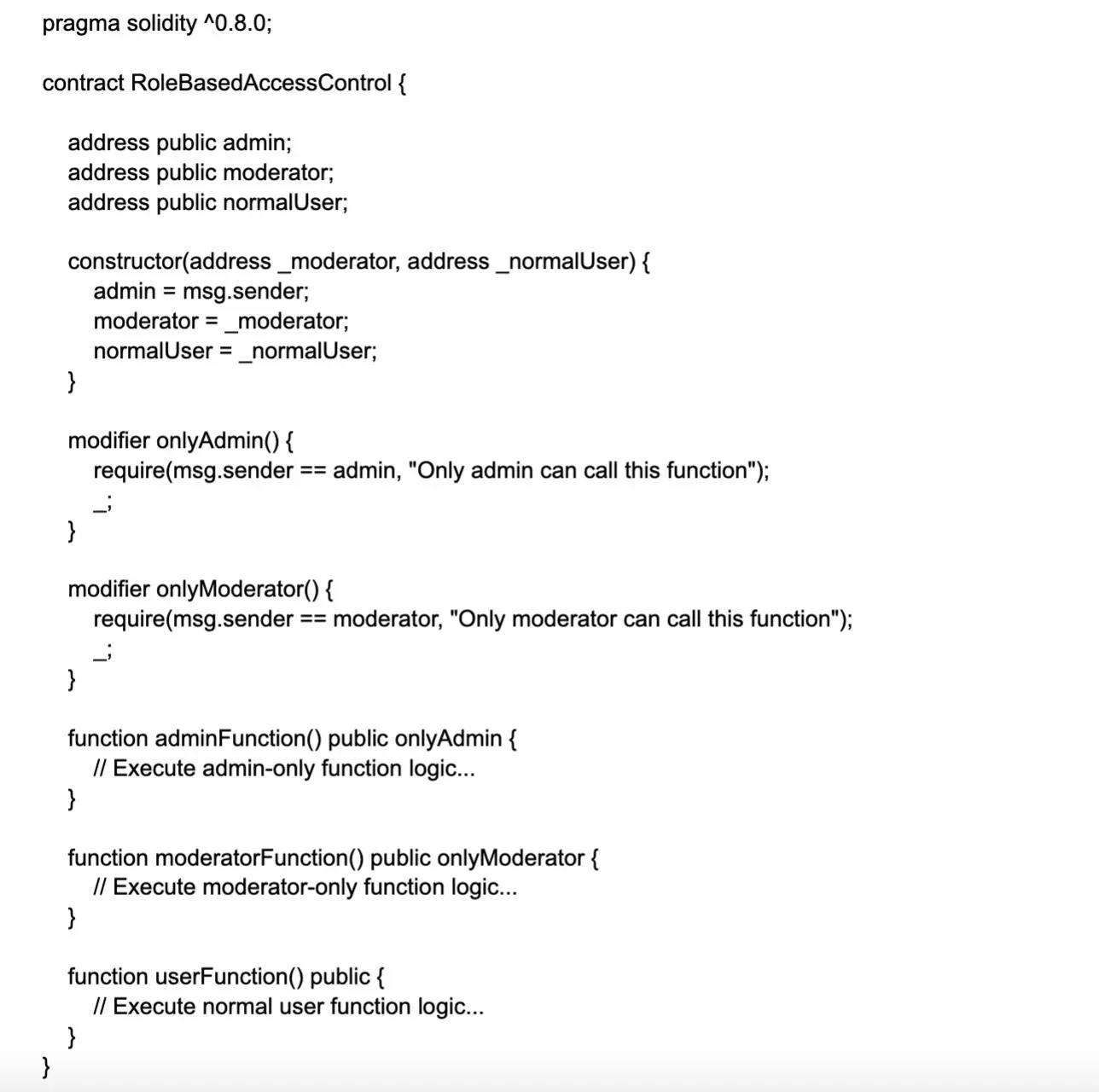
Solidity
Basic Interview Q&A
1. Explain Solidity. What are the main components of a Solidity contract?
Solidity is a statically-typed, high-level programming language primarily used to write smart contracts on Ethereum-based blockchain platforms. It was specifically designed to enable developers to easily create, deploy, and manage smart contracts on the Ethereum network. Solidity code is compiled to bytecode and executed on the Ethereum Virtual Machine (EVM), which ensures isolation, security, and transparency during contract execution.
The main components of a Solidity contract are:
Pragma statement: Specifies the required version of the Solidity compiler for the contract.
State variables: Variables that store the contract's state data persistently on the blockchain.
Constructor: A special function called once at contract deployment, used for initializing state variables.
Functions: Define the logic and behavior of the contract; can be divided into subcategories like view, pure, external, and internal functions.
Modifiers: Reusable code snippets that can be added to functions to modify their behavior, often to enforce access restriction or requirements.
Events: Custom data structures that emit transaction logs for external listeners to monitor contract activity and state changes.
Inheritance: Allows a contract to inherit properties (state variables, functions, events, and modifiers) from a base contract, enabling code reuse and abstraction.
These components enable developers to build complex and efficient smart contracts that interact with the Ethereum blockchain in a secure and decentralized manner.
2. Define Ethereum smart contract.
An Ethereum smart contracts is a self-executing, autonomous piece of code that runs on the Ethereum blockchain. It contains the terms of an agreement between parties, and it is enforced automatically by the Ethereum Virtual Machine (EVM) when certain predetermined conditions are met.
Smart contracts can store and manage data, transfer digital assets, execute functions, and interact with other contracts on the Ethereum network, enabling decentralized applications (DApps) to be built and executed without intermediaries. Smart contracts are typically written in a high-level programming language like Solidity and then compiled into bytecode for execution on the EVM.
3. Why is the Ethereum smart contract so special compared to other programs?
Ethereum smart contracts are special compared to other programs due to the following reasons:
Decentralized execution: Smart contracts run on the Ethereum blockchain, which is a decentralized network. This means that the execution of a smart contract doesn't rely on a single authority or server, but rather on multiple nodes spread around the world. This increases the reliability and fault tolerance of the smart contract.
Immutable and tamper-proof: Once a smart contract is deployed on the Ethereum blockchain, its code cannot be altered. This makes smart contracts invulnerable to hacking or unauthorized changes, ensuring that the rules established in the contract remain unchanged.
Transparent and verifiable: All transactions and state changes in a smart contract are recorded on the Ethereum blockchain, and this information is publicly visible. This helps establish trust among the participants, as they can audit and verify that the smart contract is functioning as intended.
Self-executing: Smart contracts are designed to execute predefined actions automatically when certain conditions specified in the contract are met. This eliminates the need for intermediaries and manual intervention to enforce the terms of an agreement, reducing the potential for human error or fraud.
Tokenization: Ethereum smart contracts can be used to create and manage digital assets through the use of tokens. This has led to various use cases in finance, gaming, collectibles, and more, that leverage tokenization as a way to represent unique assets or value.
4. Define Ethereum networks.
Ethereum networks are blockchain ecosystems that are built using the Ethereum protocol. They are decentralized platforms that facilitate the execution of smart contracts and transactions using the Ether (ETH) cryptocurrency. There are primarily two types of Ethereum networks:
Mainnet: The mainnet is the primary and original Ethereum network. It is a public, decentralized, and permissionless network where Ether holds real-world value, and transactions and contract executions are performed using real Ether. The mainnet is used for deploying production-level smart contracts and applications, and all nodes maintain the network's security, validate transactions, and reach consensus following the Ethereum protocol.
Testnets: Testnets are alternative Ethereum networks used for testing and development purposes. They provide a sandbox environment where developers can deploy and interact with smart contracts without risking real Ether. Testnet Ether has no real-world value, and testnets are isolated from the mainnet to avoid any impact on the mainnet's security or stability. Some of the commonly used Ethereum testnets are Ropsten, Rinkeby, and Goerli.
5. Explain enum.
An enum, short for "enumerated type," is a user-defined data type in Solidity that represents a set of named values called elements or members. Enums provide a convenient way to work with a collection of distinct values, often used to model a set of states or modes that a system or contract might be in.
Enums improve code readability by using descriptive names for states instead of using direct integer values, thus making the code easier to understand and maintain. In Solidity, enums are declared using the enum keyword followed by a descriptive name for the enumeration and a set of values enclosed in curly braces {}.
6. Explain the role of the Ethereum Virtual Machine (EVM).
The Ethereum Virtual Machine (EVM) plays a crucial role in the Ethereum ecosystem, serving as the runtime environment for smart contracts running on the Ethereum blockchain. It ensures that smart contracts are executed securely and consistently across all nodes in the network. The main roles of the EVM can be summarized as follows:
Executing smart contracts: The EVM processes the EVM bytecode generated from high-level smart contract languages like Solidity. Each opcode in the bytecode represents basic operations like arithmetic, logic, and storage, which the EVM executes sequentially.
Isolating contract execution: EVM provides a sandboxed environment to execute smart contracts, ensuring that the execution is isolated from the underlying system and other contracts. This guarantees the safety and security of the network and prevents malicious contracts or bugs from affecting other parts of the system.
Maintaining state: The EVM is responsible for maintaining the state of the Ethereum blockchain, which includes the contract state and balances of all accounts. When a smart contract's state changes due to the execution of a function, the EVM updates the contract's state accordingly to ensure an accurate and up-to-date representation of the contract's data.
Handling gas: The EVM uses the concept of gas to measure the cost of executing a transaction or smart contract. Gas is paid in Ether and represents the computational resources required for executing a particular operation. The EVM calculates the total gas used during contract execution and ensures that a transaction has sufficient gas to complete the necessary operations.
7. What is the formula to calculate Ethereum gas cost?
Gas is the price of gas in Ether that a user is willing to pay to execute a transaction on the network. Transactions with higher gas prices are prioritized by miners, as they receive a higher reward for including them in a block.
Gas fees are paid in Ethereum using this formula.

Here gasLimit = maximum amount of gas that is going to spend on a single transaction

8. What is a gas limit in Solidity?
A gas limit in Solidity refers to the maximum amount of gas a user is willing to spend on a transaction or a contract execution. When creating a transaction on the Ethereum network, users must specify a gas limit to ensure they don't accidentally spend more gas than they intend. If a transaction requires more gas than the specified gas limit, the transaction will be reverted, and used gas will not be refunded. Conversely, if a transaction requires less gas than the gas limit, the remaining gas will be returned to the user.
9. What is a variable in Solidity?
A variable in Solidity is a storage location in a contract that holds a value of a specific data type. Variables in Solidity can be broadly classified into two categories: state variables and local variables.
State variables: These are the variables declared outside of any functions in a contract, and they are permanently stored on the Ethereum blockchain. Their values persist across function calls throughout the contract's lifecycle, and they can have different visibility levels: public, private, internal, and external.
Local variables: These are the variables declared within a function or a block, and their scope is limited to that function or block. They do not persist beyond the function call and are not stored on the blockchain.
Variables in Solidity also have data types, such as uint, int, address, bool, bytes, or string. Additionally, Solidity supports complex data structures like arrays, structs, and mappings.
10. What is the method of payment for gas?
Gas is paid in ether using the formula: ether cost = gasPrice * gas. In this formula, the gas represents the gas cost of executing a transaction. gasPrice is in wei / gas, usually expressed in Gwei. A transaction also shows a gasLimit parameter- it specifies the maximum number of gas that a transaction can pay. A transaction without this could potentially deplete an account's Ether.
11. Give one difference between a uint8 and a uint16?
Uint8 = store a number of up to 2^8 -1 (it has 8 bits)
Uint16 = store numbers of up to 2^16 – 1.
12. Give one difference between the state variable and the local variable?
State variable= State variable values permanently stored in contract storage.
Local variable= Local variables values are present till functions are executed.
13. Who can read private and public variables?
In Solidity, the visibility of variables determines who can access those variables.
Public variables: They can be accessed by any contract, function, or external entity. When a public state variable is declared in Solidity, the compiler automatically generates a getter function for that variable, which allows any external entity or other contracts to read its value. However, modifying the value of a public variable is still limited to the contract or derived contracts themselves.
Private variables: They can be accessed only within the contract that declares them. Private variables are not accessible by any external entity, nor by contracts derived from the contract in which they are declared. They provide encapsulation and help maintain the contract's internal state securely.
It's important to note that although private variables cannot be directly accessed by external entities, their values may still be read indirectly through transaction data on the blockchain, since all data is public on the Ethereum network. To ensure confidentiality, consider alternative approaches such as encrypting sensitive information off-chain.
14. Does the EVM understand Solidity?
No. The Ethereum Virtual Machine (EVM) does not directly understand Solidity. Instead, it understands and executes bytecode, a lower-level language.
When you write a smart contract in Solidity, the code must go through a couple of steps before it can be executed on the EVM:
Compilation: The Solidity code is compiled into an intermediate representation called Ethereum bytecode using a compiler like solc. This bytecode is a sequence of low-level instructions that the EVM can understand.
Deployment: The compiled bytecode is then deployed to the Ethereum network, where it resides on the blockchain as part of a contract's data.
When a function or transaction is executed for a smart contract, the EVM reads and processes the corresponding bytecode instructions. Since EVM bytecode is a lower-level language, it is closer to machine code and more efficient for the EVM to execute, allowing for better performance and resource utilization.
15. What is a staking pool in Solidity?
A staking pool in the context of Solidity is a smart contract that allows users to pool their cryptocurrency holdings (e.g., Ether or tokens) together and participate in various blockchain activities, like Proof-of-Stake (PoS) consensus mechanisms, liquidity provision on decentralized exchanges, or revenue-generating platforms like yield farming.
A staking pool is typically designed to provide users with proportional rewards based on their stake, maximize potential earnings, and mitigate risks associated with individual staking. The staking pool smart contract would define how users can add and withdraw their funds, how the rewards are calculated, and how they are distributed among the participants.
16. What is a proxy contract in Solidity?
A proxy contract in Solidity is a design pattern that employs a secondary contract to act as an intermediary between the users and the main contract, which houses the core business logic. Proxy contracts are often used for upgradeability and storage optimization purposes.
The proxy contract maintains a reference to the main contract (often called the logic or implementation contract) and delegates calls from users to the main contract, effectively forwarding function calls and data to the appropriate methods in it. This allows developers to maintain the proxy contract's state, while the main contract's code can be replaced or updated without affecting the data.
17. What is a function of Solidity?
A function is a group of instructions that perform a specific task. And it can be reused anywhere in the program, which saves the unreasonable use of memory and decreases the runtime of the program; by creating a function, users do not need to write the same code repeatedly.
18. Describe an event in Solidity.
An event in Solidity is a custom data structure used to log information and notify external consumers, such as off-chain applications or services, about specific occurrences within a contract. Events serve as a convenient way to emit data that can be easily observed and monitored by external entities without reading the entire contract state.
Events are declared in contracts using the event keyword and usually contain parameters that define the data to be logged. When an event is triggered, the EVM emits a log that includes the event data, making it searchable and accessible via blockchain explorers or APIs.
19. What is the difference between public and private visibility in Solidity?
In Solidity, visibility modifiers like public and private determine the accessibility of state variables, functions, and contracts. The difference between public and private visibility in Solidity is as follows:
Public: When a state variable, function, or contract is marked public, it is accessible from any contract (including the contract itself, derived contracts, and other external contracts) and can also be called directly by external transactions. For state variables, Solidity automatically generates a getter function to allow external access.
Private: When a state variable, function, or contract is marked private, it is accessible only within the contract in which it is defined. It cannot be accessed from derived contracts or other external contracts. No getter functions are generated for private state variables.
20. In Solidity, explain the constructor?
In Solidity, a constructor is a special function within a contract that is called only once, at the time of contract deployment. The constructor is used to initialize the contract's state variables and set the initial state of the contract. It can be identified by the keyword constructor.
A Solidity constructor may have one or more arguments, allowing users to pass values during the contract deployment. Additionally, it can have visibility modifiers like public or internal. However, private and external modifiers are not allowed for constructors.
21. Explain delegatecall here in Solidity.
delegatecall is a low-level function in Solidity used to call a function in another contract, while preserving the context (storage and caller address) of the calling contract. It allows the called function to access and modify the calling contract's storage, effectively enabling code reuse or upgradable contracts.
When delegatecall is used, the called function runs in the context of the calling contract, making it possible to modify state variables and access other functions of the calling contract as if they are in the same contract. This functionality should be used with caution due to potential security concerns and risks associated with giving another contract direct control over the calling contract's storage.
22. What is a library?
A library in Solidity is a reusable and deployable piece of code that can be shared by multiple smart contracts, allowing for reduced code redundancy, optimized gas usage, and enhanced modularity. Libraries are similar to contracts, but they cannot have state variables, nor can they inherit or be inherited from other contracts.
Functions in a library can be viewed as pure functions without knowledge of the contract's state. When a library function is called, the context of the calling contract remains unchanged, allowing library functions to operate on the calling contract's state variables through the use of the using keyword. This allows for efficient code reuse and helps contract developers modularize their smart contract implementation.
23. How many types of libraries are there in Solidity?
Deployed- They have their own address, and several other smart contracts can use them.
Embedded- They don't have their own unique address. They are deployed as part of the code of the smart contract that uses them.
24. Mention two famous smart contract frameworks for Solidity.
Truffle: Truffle is an Ethereum development framework that provides tools for building and testing smart contracts in Solidity. It simplifies the entire development process by offering a built-in testing environment, deployment management with migrations, and a powerful command-line interface. Truffle also supports popular Ethereum libraries such as Web3.js and provides access to Ganache, a personal blockchain for development and testing.
Hardhat: Hardhat is another leading smart contract development framework that focuses on developer experience and productivity. It offers a range of features, including an Ethereum development environment, a testing framework, and a task runner. Hardhat is well-known for Hardhat Network, an Ethereum node designed for local development, which supports advanced debugging and console.log() functionality directly from your Solidity contract. Additionally, Hardhat integrates with popular Ethereum libraries and testing tools, such as Ethers.js, Waffle, and TypeChain.
Read more about Python vs Javascript
25. Mention two networks where you can deploy a Solidity smart contract.
Two networks where you can deploy a Solidity smart contract are:
Ethereum Mainnet: The Ethereum Mainnet is the primary, public blockchain network where Ether has real-world value and smart contracts can interact with real users and decentralized applications.
Ropsten Testnet: Ropsten is a widely-used Ethereum test network that allows developers to deploy and test their smart contracts without incurring any real-world costs. It uses Proof of Work consensus mechanism and offers test Ether to simulate real-world conditions.
26. Can you list some distinctions between view and pure functions?
Here are some distinctions between view and pure functions in Solidity:
State reading: view functions allow reading data from the contract's state, while pure functions do not access the contract's state at all.
State modification: Neither view nor pure functions modify the contract's state.
Gas consumption: Since view functions can access the contract's state, their gas consumption is dependent on the operations and data read from the state. On the other hand, pure functions do not access the state, so their gas consumption is more predictable as it depends only on the function's execution, not the state interactions.
Use cases: View functions are often used for retrieving information about the contract and its state, like checking a user's balance or getting some specific details from the contract. pure functions, in contrast, are used for computations that depend only on the function's input, like calculating a hash or performing a mathematical operation.
Function calls: Both view and pure functions can be called from within the contract or from other contracts. However, they are not supposed to change the contract's state or affect any transactions, making them suitable for off-chain or local calls that simulate a transaction without actually sending it to the blockchain.
27. Please outline some differences between the Ethereum blockchain and Bitcoin.
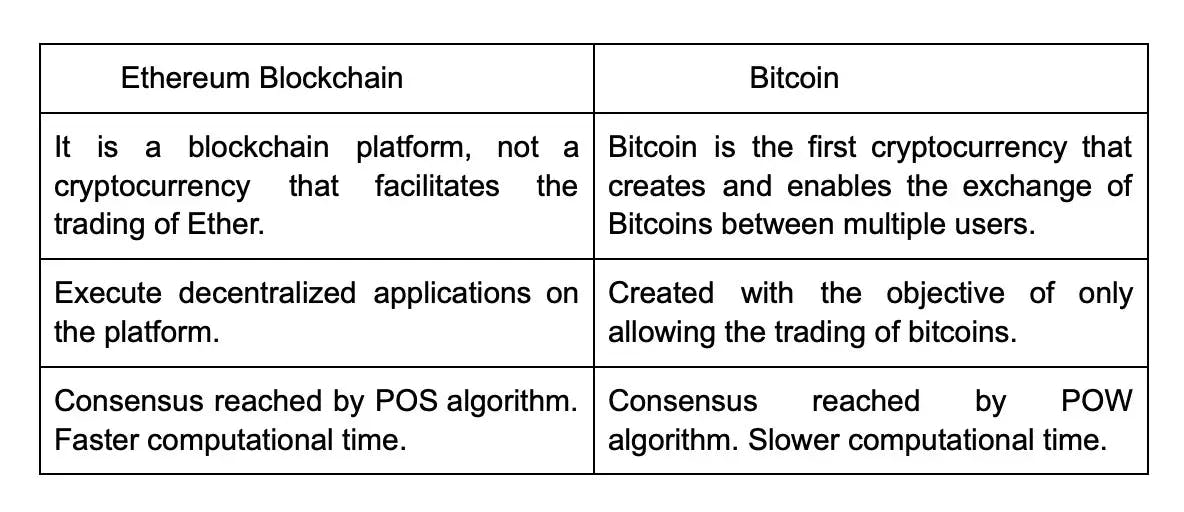
28. Outline some differences between a struct and an array?

29. What do you need to do to deploy a smart contract to the Ethereum network?
To deploy a smart contract to the Ethereum network, follow these steps:
Write the smart contract: Create a Solidity smart contract, following best practices and conforming with the required standards, such as ERC-20 for tokens.
Test the smart contract: Thoroughly test the smart contract using tools like Remix IDE, Truffle, or Hardhat. Write unit tests and ensure your contract behaves as expected.
Compile the contract: Compile the smart contract using a Solidity compiler, such as solc, to generate bytecode and Application Binary Interface (ABI).
Choose a network: Determine the appropriate Ethereum network for deployment, such as the Ropsten or Rinkeby Testnets (for testing) or Mainnet (for production).
Fund your account: Ensure you have Ether in the account used for deployment. If using a testnet, request Ether from a faucet.
Prepare the deployment script: Create a deployment script or use a tool like Truffle or Hardhat to simplify the deployment process. Include the contract bytecode, ABI, constructor arguments (if any), and gas price in the script.
Unlock your wallet: Unlock your Ethereum wallet (private key), which is used for signing the deployment transaction.
Deploy the contract: Execute the deployment script or command. This will send a deployment transaction to the network, signed by your wallet.
Wait for transaction confirmation: Monitor the transaction hash for confirmation. Once the transaction is mined and confirmed, the smart contract address will be available.
Verify and publish the contract source code (optional): Upload the contract source code on a platform like Etherscan to publicly verify the contract's authenticity and function. This step helps garner trust from potential users.
Wrapping up
We hope the above list of Solidity interview questions will give you a headstart for cracking your ideal Solidity developer job. By dividing the questions based on the level of difficulty we have tried to provide you an overview of the important concepts that define Solidity.
If you want to work as a Solidity developer for some of Silicon Valley's most outstanding organizations, take the Turing test today to be considered for these positions. Leave a message on Turing.com if you want to employ the top Solidity developer, and someone from the team will contact you.
Hire Silicon Valley-caliber Solidity developers at half the cost
Turing helps companies match with top quality remote JavaScript developers from across the world in a matter of days. Scale your engineering team with pre-vetted JavaScript developers at the push of a buttton.
Tired of interviewing candidates to find the best developers?
Hire top vetted developers within 4 days.
Leading enterprises, startups, and more have trusted Turing

Check out more interview questions
Hire remote developers
Tell us the skills you need and we'll find the best developer for you in days, not weeks.




